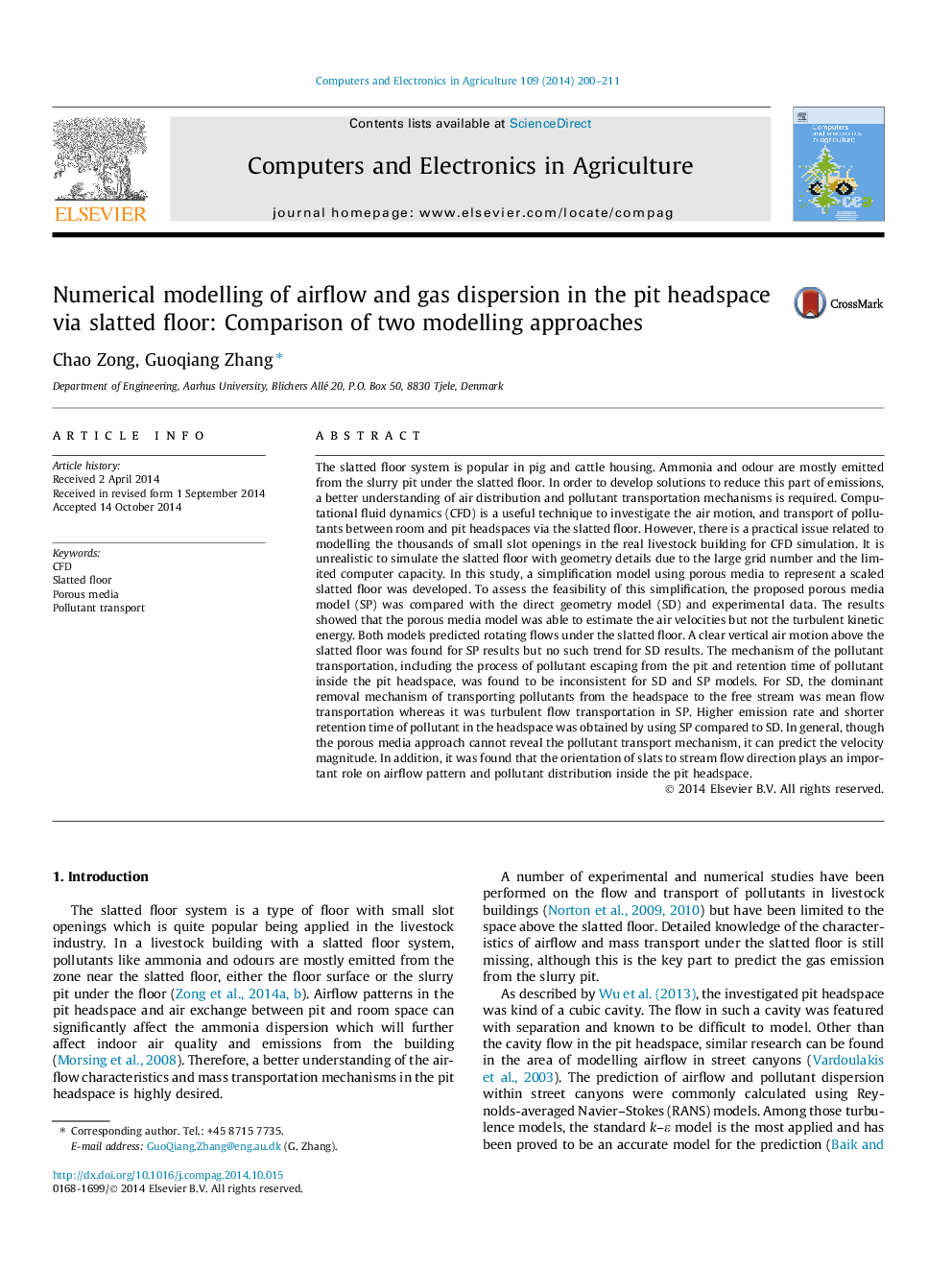| کد مقاله | کد نشریه | سال انتشار | مقاله انگلیسی | نسخه تمام متن |
|---|---|---|---|---|
| 84241 | 158870 | 2014 | 12 صفحه PDF | دانلود رایگان |
• A porous media approach of dispersion under slatted floor was developed.
• The porous media approach can well predict the velocities compared with direct geometry approach and measurements.
• The porous media approach cannot well predict the mass transport process.
• The orientation of slat to stream direction affects the dispersion under slatted floor.
The slatted floor system is popular in pig and cattle housing. Ammonia and odour are mostly emitted from the slurry pit under the slatted floor. In order to develop solutions to reduce this part of emissions, a better understanding of air distribution and pollutant transportation mechanisms is required. Computational fluid dynamics (CFD) is a useful technique to investigate the air motion, and transport of pollutants between room and pit headspaces via the slatted floor. However, there is a practical issue related to modelling the thousands of small slot openings in the real livestock building for CFD simulation. It is unrealistic to simulate the slatted floor with geometry details due to the large grid number and the limited computer capacity. In this study, a simplification model using porous media to represent a scaled slatted floor was developed. To assess the feasibility of this simplification, the proposed porous media model (SP) was compared with the direct geometry model (SD) and experimental data. The results showed that the porous media model was able to estimate the air velocities but not the turbulent kinetic energy. Both models predicted rotating flows under the slatted floor. A clear vertical air motion above the slatted floor was found for SP results but no such trend for SD results. The mechanism of the pollutant transportation, including the process of pollutant escaping from the pit and retention time of pollutant inside the pit headspace, was found to be inconsistent for SD and SP models. For SD, the dominant removal mechanism of transporting pollutants from the headspace to the free stream was mean flow transportation whereas it was turbulent flow transportation in SP. Higher emission rate and shorter retention time of pollutant in the headspace was obtained by using SP compared to SD. In general, though the porous media approach cannot reveal the pollutant transport mechanism, it can predict the velocity magnitude. In addition, it was found that the orientation of slats to stream flow direction plays an important role on airflow pattern and pollutant distribution inside the pit headspace.
Journal: Computers and Electronics in Agriculture - Volume 109, November 2014, Pages 200–211
